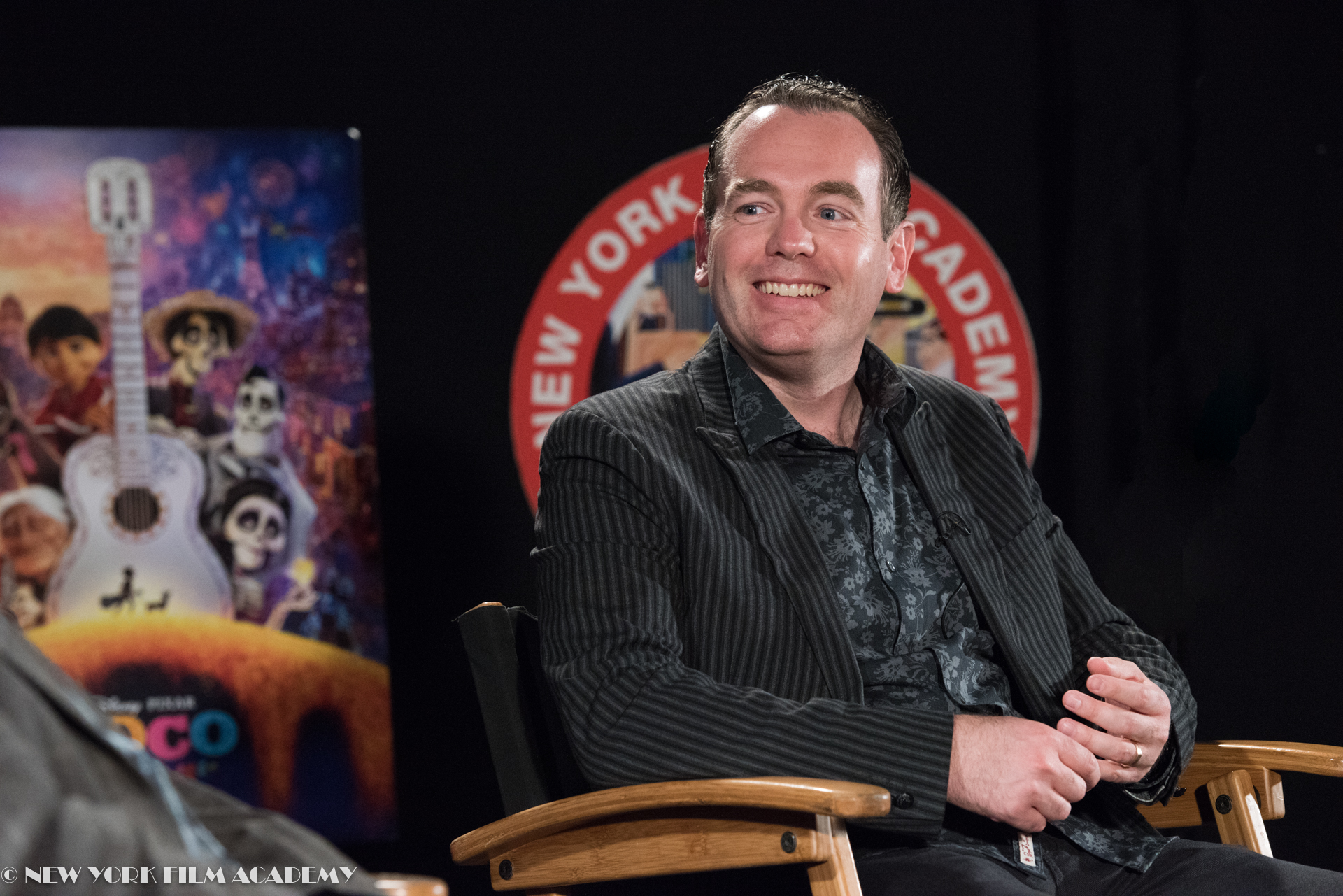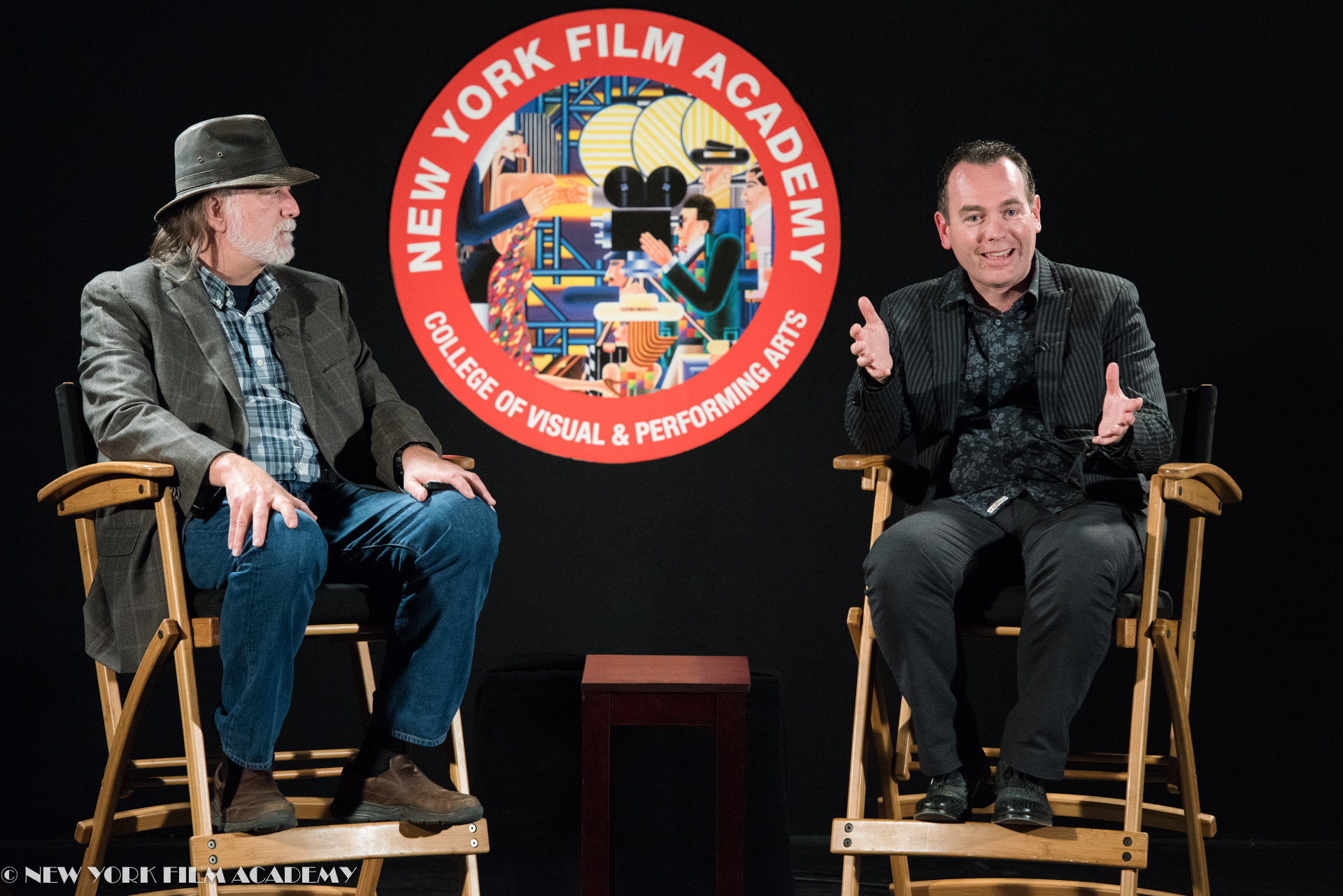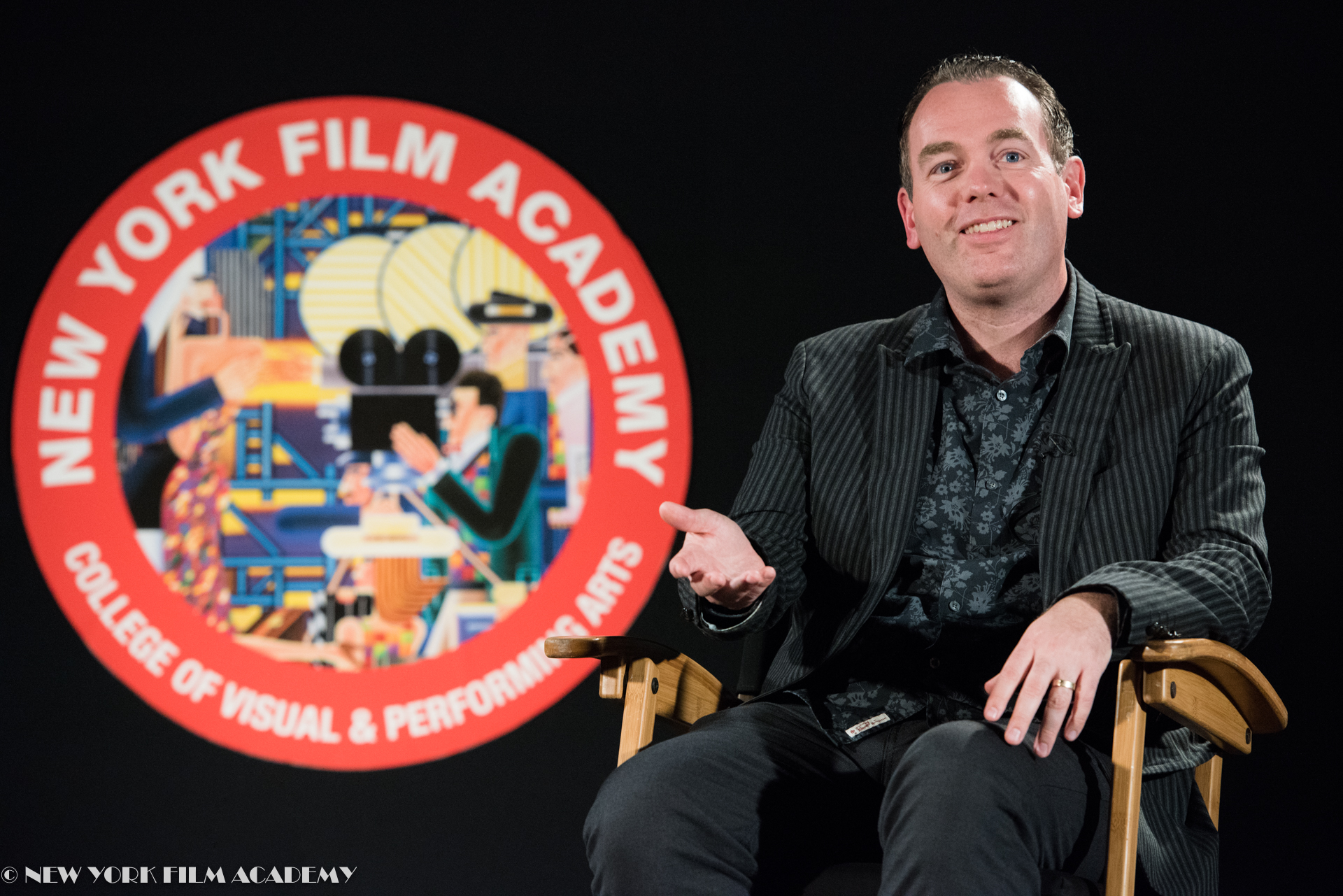On Wednesday, November 15th, students at the Los Angeles campus of the New York Film Academy were invited to a special animation presentation of “Coco” led by Character Shading Lead, Byron Bashforth. Chair of Animation, Craig Caton-Largent, played host for the evening.
Bashforth brought several clips from the film. Crowd favorites included an inspiring musical number and an overconfident child fighting with their family. Students were also able to view the stages of animation.
One of the main challenges of making “Coco” was how to make a convincing skeleton that wouldn’t scare the children in the audience. Creators went back and forth making a lot of little decisions such as should the skulls have eyes, what’s the best way to give a skull mouth shapes, and how to distinguish personalities out of the basic bone structure. All of these decisions added up to make for some pretty creative solutions.
The choice to add cloth to bone was one such challenge. The skeletal system is attached to ligaments and muscle tissue. Without them, there are large spaces between the bones. When the characters in “Coco” would walk around, their clothes would get caught in these notches. The animators were tasked with finding a way to keep the integrity of the look of the skeleton, but get the clothes to fit like they were on a flesh and blood body. The answer was to digitally sew cloth around the joints. It can’t be seen in the movie, but it works incredibly well.
From this idea, sprung another. Without any body fat, clothes just drape over the body. Belts, shoulder pads, and heavy fabrics were implemented to give shape to all of the exposed-bone characters.
The walking-test of the characters showed the way in which personalities are given to each person. The sway of their hips, how much their bones jiggle, and a pronounced and defined brow ridge truly helped distinguish one skeleton from another.
Bashforth seemed most excited about discovering a way to make authentic non-scary bones. Disney Studios is a treasure trove of the exotic. So he put the call out to everyone in the office that might have a piece of real animal bone. The best response was a whale vertebra, but they also received cow bones and other animals of varying shapes and sizes.
After each piece of bone was scanned into the computer they experimented with layering the different textures over one another until finding something that looked like bone, but not too much. Then, they created a program where they could control how fresh or deteriorated the bones looked. This ended up being massively helpful because the city of the dead has a lot of skeletons. It also has a lot of lights, “Some of the shots had well over a million lights,” Bashforth said.
One student asked, “How much of the animation is based on the performance the actors give and how much is based on the artist’s own imagination?”
Bashforth answered, “The voice recordings are done first and then the animators animate them as much as possible. The animation performances are really centered around the actors.” The animators would set up cameras in the recording booths and study the performances.
The New York Film Academy would like to thank Disney and Byron Bashforth for taking the time to speak with our students. Go see “Coco,” now in theaters nationwide.


